49+ Sample Marketing Survey Templates
Check out the following samples of marketing surveys.
-
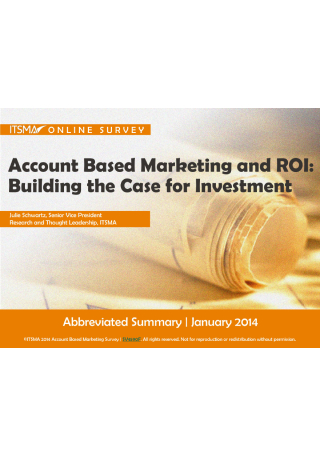
Account-Based Marketing Survey
Find out if ABM delivers a high return on investment for your business through a survey.
-
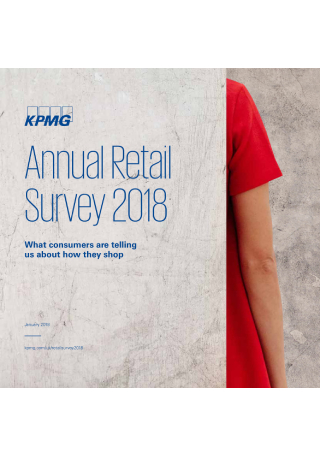
Annual Retail Survey
Gain insightful details into customer spending behavior with the help of a survey.
-

Asset Management Digital Marketing Survey
Discover how marketers are dealing with digitally centered investors using a survey.
-

B2B Marketing Survey
Gather intelligence on the average B2B marketer’s tactics with the use of a survey.
-
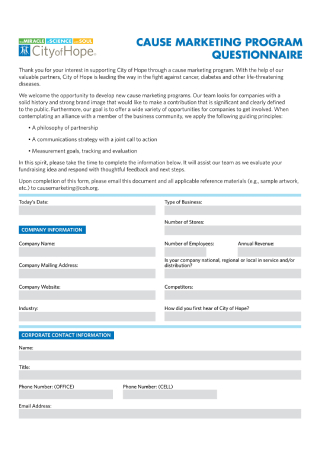
Cause Marketing Survey Questionnaire
Develop new cause marketing programs through the results from a survey.
-

Client Experience Survey Report
Improve your client experience strategies with the help of a survey.
-
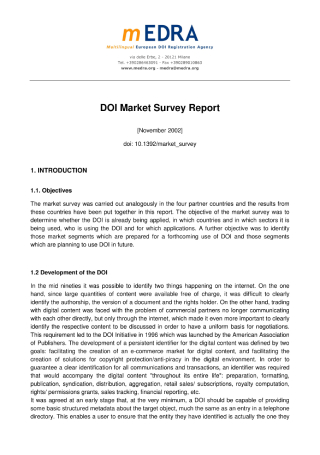
Comprehensive Market Survey Report
Put the results from your market survey together in one comprehensive report.
-

Consumer Survey Report
Understand how consumers feel about your products and services through a survey.
-
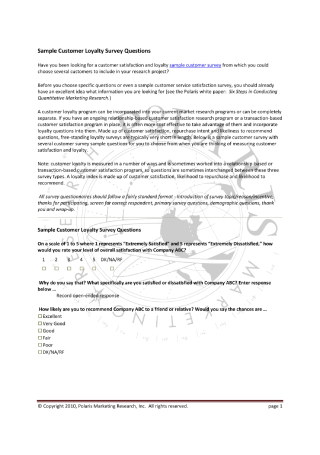
Customer Loyalty Survey Questions
Learn how you can obtain customer loyalty by asking the right survey questions.
-
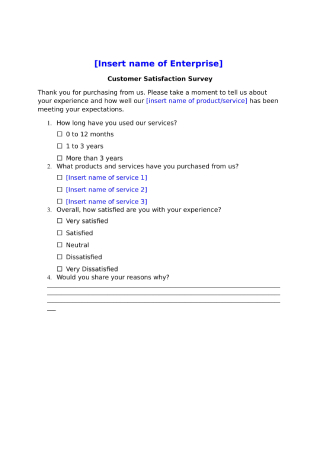
Customer Satisfaction Survey
Measure customer satisfaction through the help of a survey.
-
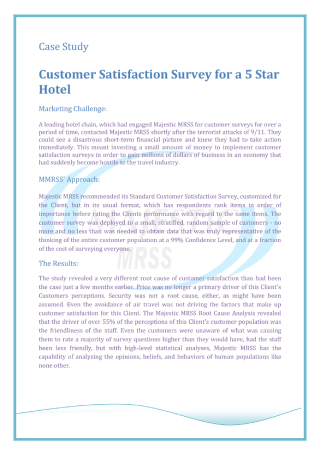
Customer Satisfaction Survey for Hotel Guests
Get valuable insights from your hotel guests with a customer satisfaction survey.
-

Customer Survey Questionnaire
Meet the changing needs of customers by using a survey questionnaire to acquire data.
-
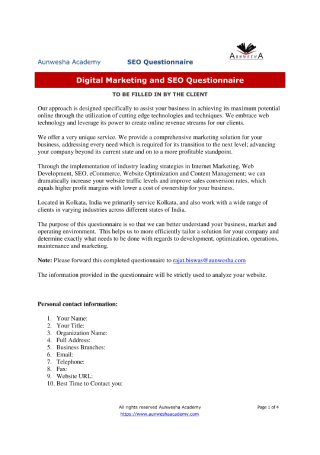
Digital Marketing and SEO Survey Questionnaire
Achieve your maximum potential online by gathering client information through a survey.
-

Digital Marketing Survey
Refine your digital marketing strategy by using a survey for market research.
-
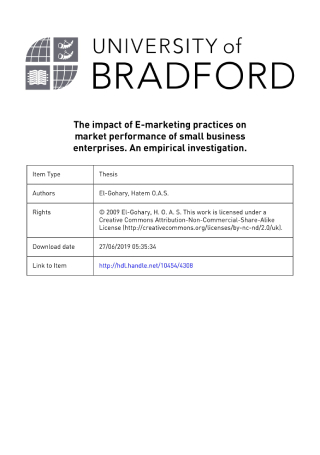
E-Marketing Research Survey
Collect the data you need to boost your online marketing efforts through a survey.
-

European Marketing Survey
Uncover the challenges that EU marketers will face in the coming years using a survey.
-

Fashion Consumer Survey Report
Understand how sustainable fashion products do in your market with a survey report.
-
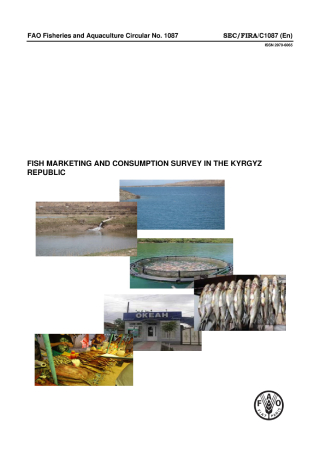
Fish Marketing and Consumption Survey
Identify the factors that affect fish marketing and consumption with the use of a survey.
-

Global Data-Driven Marketing Survey
Get to know the principles of data-driven marketing with this survey sample.
-

Inbound Marketing Survey Report
Obtain a deeper understanding of inbound marketing using this report based from a survey.
-

International Construction Market Survey
Acquire insights into the state and direction of the global construction industry using a survey.
-

Labor Market Survey Report
Identify the types of employment opportunities available in the market through a survey.
-

Law Firm Digital Marketing Survey
Use a survey to find out how important digital marketing can be for law firms.
-
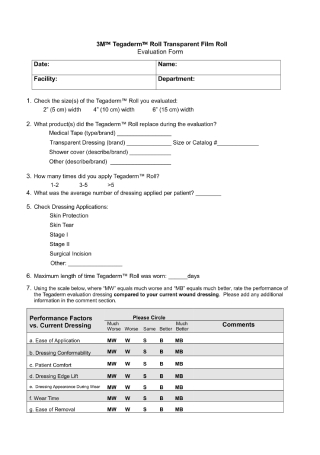
Market Evaluation Survey
Assess how your market perceives your products and services through a survey.
-

Marketing Activities Survey Questionnaire
Use this market activities survey questionnaire to guide your company’s marketing strategy.
-
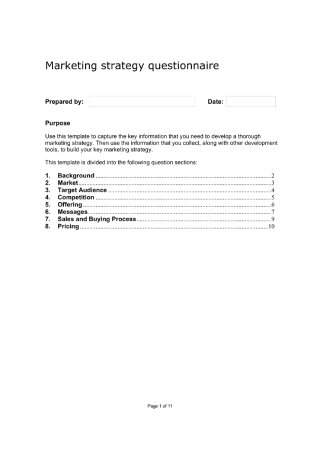
Marketing Strategy Survey Questionnaire
Make important decisions for your marketing strategy with the help of a survey.
-

Market Price Survey Questionnaire
Collect price data from your target market with a survey questionnaire.
-
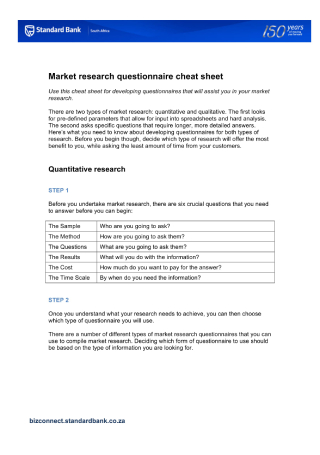
Market Research Survey Questionnaire
Determine if your business ideas are feasible with a market research survey.
-

Market Survey for Business Expansion
Identify market opportunities for your company’s business growth initiatives through a survey.
-
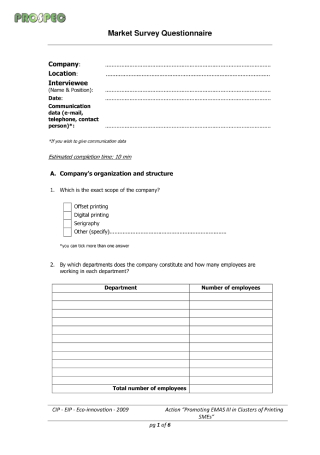
Market Survey Questionnaire
Analyze the opinions and perceptions of your market with the use of a survey.
-
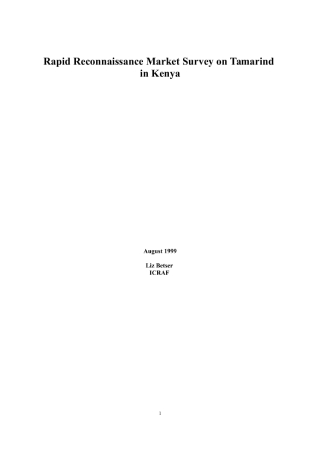
Market Survey Report
Study the different customer capabilities through the data reflected in this survey report.
-

National Farmers Market Survey
Evaluate the trends and opportunities for a farmers market with the results from your survey.
-
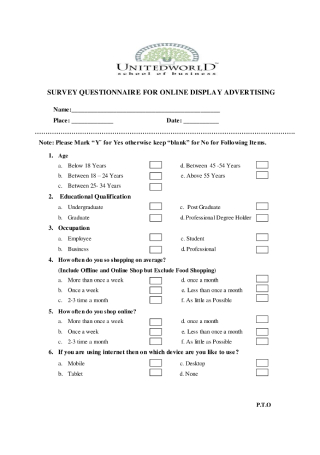
Online Display Advertising Survey Questionnaire
Conduct a market survey on online display advertising using the sample provided.
-

Online Survey for Green Marketing
Refer to this sample to design an online survey for green marketing.
-
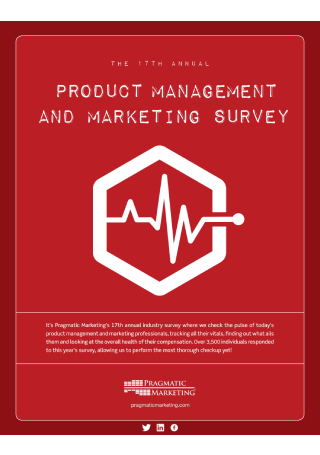
Product Management and Marketing Survey
Stay ahead of the competition with the help of a marketing survey.
-
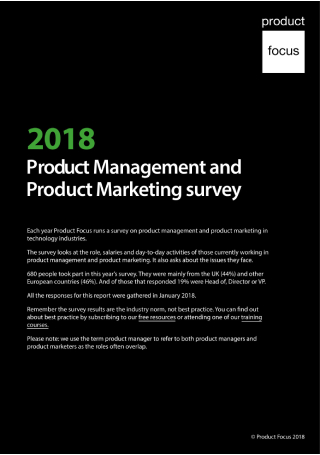
Product Management and Product Marketing Survey
Gain a deep understanding of product management and product marketing with a survey.
-

Retail E-Marketing Research Survey
Gather information about the shopping behavior of online buyers through a survey.
-

SEO Strategy Survey Summary Report
Improve your search rankings through the results generated from a market survey.
-
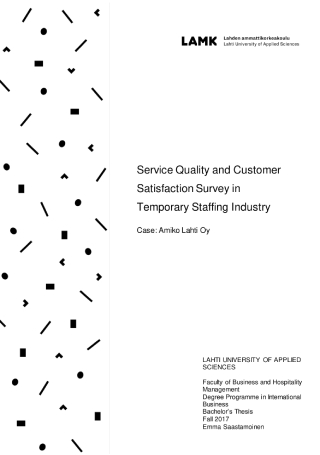
Service Quality and Customer Satisfaction Survey
Analyze the quality of service provided to customers using a market satisfaction survey.
-
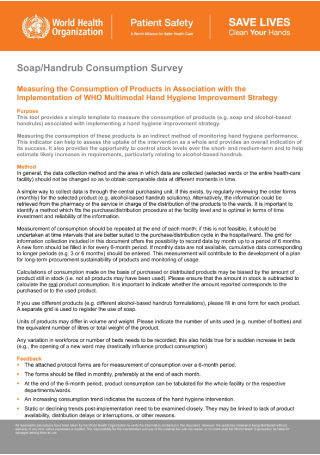
Soap or Handrub Consumption Survey
Capture data on the usage of hygiene products through a market consumption survey.
-
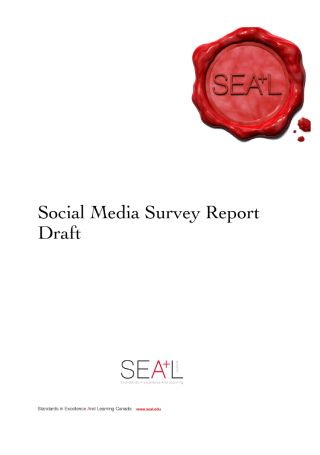
Social Media Marketing Survey Report
Obtain a snapshot of social media usage among a target demographic with a survey.
-

Survey Findings on Content Marketing
Study the facts and figures of content marketing using the survey findings acquired.
-

Survey of Medicine Prices in the Market
Assess the costs of prescribed medicines in the market through a survey.
-
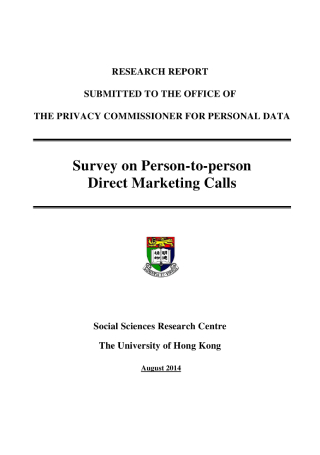
Survey on Person-to-Person Direct Marketing Calls
Administer a survey on person-to-person direct marketing calls using the given sample.
-
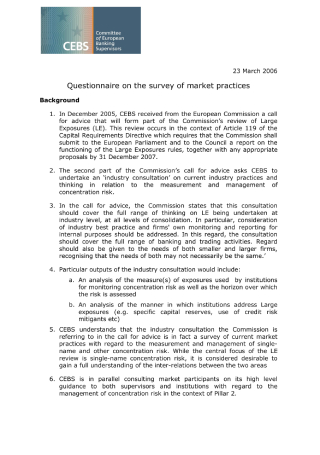
Survey Questionnaire on Market Practices
Get the data you need to study significant market practices through a survey.
-
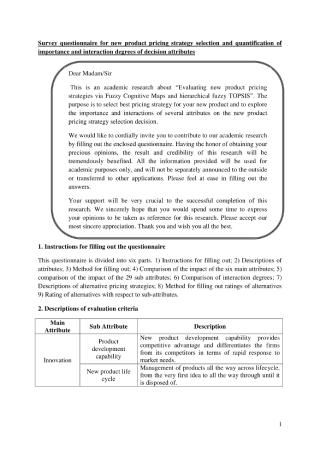
Survey Questionnaire on New Product Pricing
Set the best possible pricing on products with the help of your survey results.
-
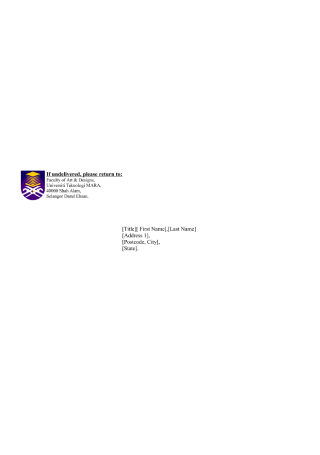
Survey Questionnaire on Print Advertisement
Receive market feedback on your print advertisements with a survey questionnaire.
-

Survey Report on Social Media Marketing
Build your social media marketing strategy based on the trends noted in your survey report.
-
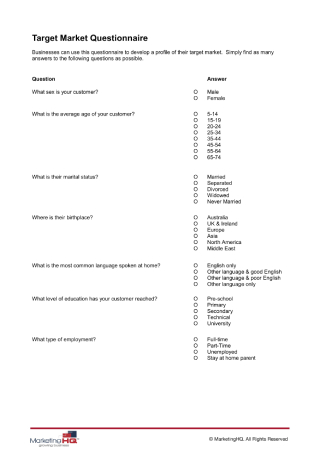
Target Market Survey Questionnaire
Define your target audience through the help of a survey questionnaire.
-
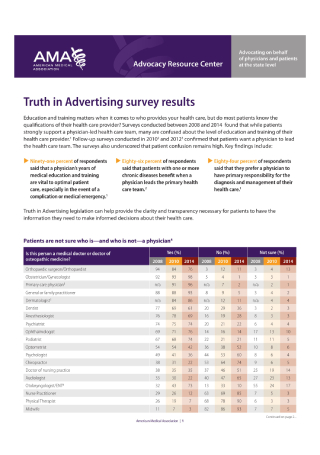
Truth in Advertising Survey Results
Examine the market’s knowledge on certain matters by referring to this sample.
FREE Marketing Survey s to Download
49+ Sample Marketing Survey Templates
What Is Marketing?
The Role of Surveys in Market Research
Why Use a Survey
Tips to Conduct a Successful Survey
What Is Marketing?
Marketing is the process of creating, communicating, and delivering offerings that are of value to potential clients and customers. This is achieved through various research, promotion, selling, and distribution efforts to interest and engage buyers. Companies work hard to convince consumers to choose their products and services over those of leading competitors. The key is to strategize programs that will attract and retain a growing base of satisfied customers and ensure better sales and customer loyalty.
There are various media channels that enable marketers to interest buyers and sell their offerings. From television campaigns to email marketing, companies optimize their resources to make sure that people are aware of their brand and its products or services. Market research plays a huge role in determining how marketers may reach customers and satisfy their needs. This is done with the help of survey questionnaires, interviews, and case studies that aim to generate the data necessary for companies to know more about their market. These results are then analyzed and used for future marketing decisions.
The Role of Surveys in Market Research
Not even the most unique and exciting strategies for upcoming products or services are guaranteed to be a market success. This is why customer capabilities must always be researched and studied beforehand to make sure that market standards are met. Marketing research refers to the function that connects the consumer public to the marketer through pertinent information that defines marketing opportunities and threats which are critical to the success of a business. This covers anything from pricing trends to competitor analysis.
Other functions of surveys in marketing research include the following:
Why Use a Survey
Every business wants to succeed in the industry they are in. But assuming what your customers like is very different from knowing what they actually want. Mere assumptions are sometimes derived from poor judgment, which is not something you’d want to bet your time and money on.
Thus, using a survey would be one of your best options. This allows you to take control of the type of questions to ask based on the data required for your study. Each question will offer you a piece of information to complete the puzzle, expanding your knowledge on the matter at hand in the most efficient way possible. As a cost-effective research method, marketers may administer the survey in several different modes to cover a large sample of people. This can be done via email, social media, telephone, mobile, or paper. It even grants anonymity for respondents to answer with more candid and valid answers. That way, you can reduce the likelihood of unfinished surveys and ambiguous responses.
Tips to Conduct a Successful Survey
Designing a survey that suits your objectives might sound daunting, but that doesn’t mean it has to be. The time and money invested in the survey’s development is not something you’d want to waste. Given that the information extracted from the survey will be used as a data source for your company, it’s important to make sure that the survey is enough to identify problem areas in your business and execute favorable strategies.
With that said, here are a few tips to guide you in administering an effective survey.
